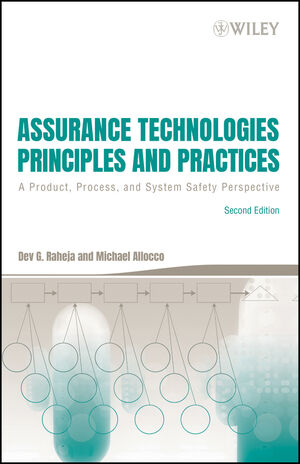Assurance Technologies Principles and Practices: A Product, Process, and System Safety Perspective, 2nd EditionISBN: 978-0-471-74491-7
Hardcover
484 pages
June 2006
 This is a Print-on-Demand title. It will be printed specifically to fill your order. Please allow an additional 15-20 days delivery time. The book is not returnable.
|
||||||
Chapter 1. Assurance Technologies, Profits, and Managing Safety-Related Risks.
1.1 Introduction.
1.2 Cheaper, Better, and Faster Products.
1.3 What is System Assurance.
1.4 Key Management Responsibilities.
1.5 Is System Assurance a Process?.
1.6 System Assurance Programs.
References.
Further Reading Reading Reading Reading Reading Reading Reading Reading Reading Reading Reading Reading



